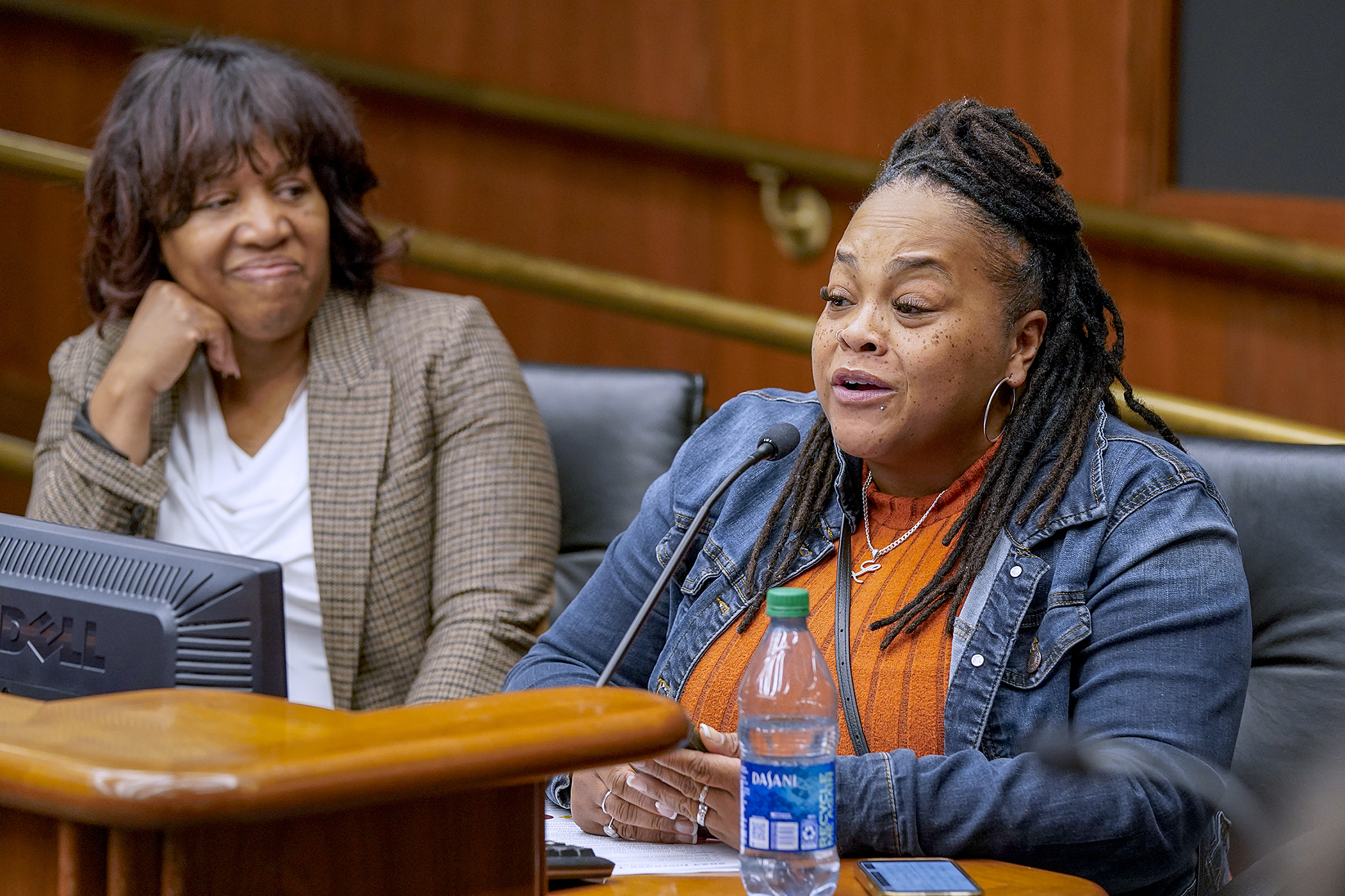Education committee OKs funding for Increase Teachers of Color Act

All Quantell Crawford ever wanted to do was become a teacher and make his parents proud.
“Due to the blessing that has come in the form of the Aspiring Teachers of Color Scholarship, I am able to overcome the staggering financial difficulties previously preventing me from pursuing my dreams,” he told the House Education Finance Committee Wednesday.
Crawford juggles commitments as a full-time graduate student at the University of St. Thomas and working full-time at Hazel Park Preparatory Academy in St. Paul as a special education teacher. The student teaching requirement of his education degree was unattainable without pay.
“I could not afford this,” he said. “I was already working full-time to pay for my schooling.”
The Increase Teachers of Color Act aims to help students like Crawford by reducing barriers and increasing incentives so that more people of color are able to become teachers in Minnesota.
“The two main purposes for this bill is closing the opportunity gaps, as far as recruiting and preparing teachers, and employing them and retaining them in the system. And also increasing investments in three impactful programs,” said Rep. Mary Frances Clardy (DFL-Inver Grove Heights).
She sponsors HF4500 that seeks $10 million for the Minnesota teachers of color scholarship program, which was not funded in the 2023-24 biennium. “It would provide about 500 annual scholarships up to $10,000 as an investment in aspiring BIPOC teachers,” Clardy said.
It would also appropriate $5 million for additional mentoring and retention grants for teachers of color or American Indian teachers — the programs are to receive $7 million in the current biennium — and $1 million for the Collaborative Urban and Greater Minnesota Educators of Color Grant Program which has been appropriated $5.44 million in fiscal years 2024 and 2025.
Applications for funds previously provided for those programs has outpaced the money already appropriated. Each appropriation would be one time.
Approved by the committee, its next stop is the House Higher Education Finance and Policy Committee.
English teacher Laketa Buice hopes to see more opportunities for students of color to join her profession. Many of her students at the St. Paul City School have told her she is their first Black teacher.
“That made my heart warm, but also a bit saddened because children deserve the right to see a representation of themselves in the teachers that educate them,” she said.
According to the Minnesota Association of Colleges for Teacher Education, research demonstrates the importance that students be taught by teachers with the same racial background. In Minnesota, about 6% of the teacher workforce identifies as a person of color or Indigenous, while about 37% of students identify as students of color or Indigenous.
Related Articles
Search Session Daily
Advanced Search OptionsPriority Dailies
Speaker Emerita Melissa Hortman, husband killed in attack
By HPIS Staff House Speaker Emerita Melissa Hortman (DFL-Brooklyn Park) and her husband, Mark, were fatally shot in their home early Saturday morning.
Gov. Tim Walz announced the news dur...
House Speaker Emerita Melissa Hortman (DFL-Brooklyn Park) and her husband, Mark, were fatally shot in their home early Saturday morning.
Gov. Tim Walz announced the news dur...
Lawmakers deliver budget bills to governor's desk in one-day special session
By Mike Cook About that talk of needing all 21 hours left in a legislative day to complete a special session?
House members were more than up to the challenge Monday. Beginning at 10 a.m...
About that talk of needing all 21 hours left in a legislative day to complete a special session?
House members were more than up to the challenge Monday. Beginning at 10 a.m...